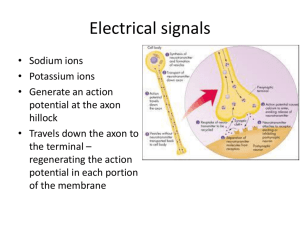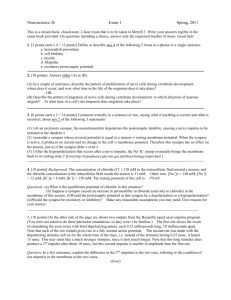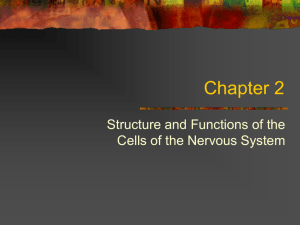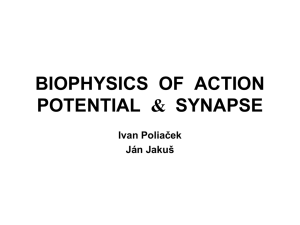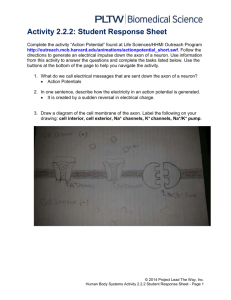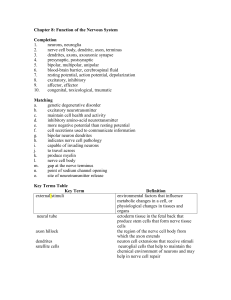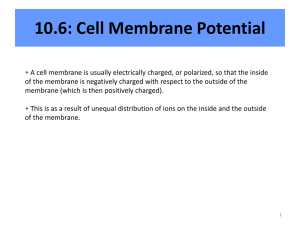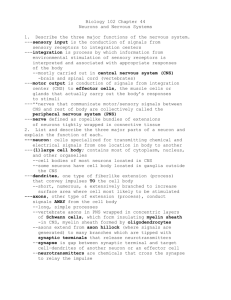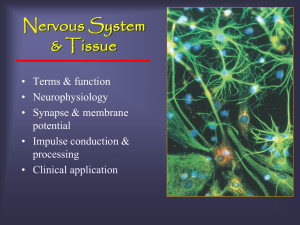Midterm 1
advertisement
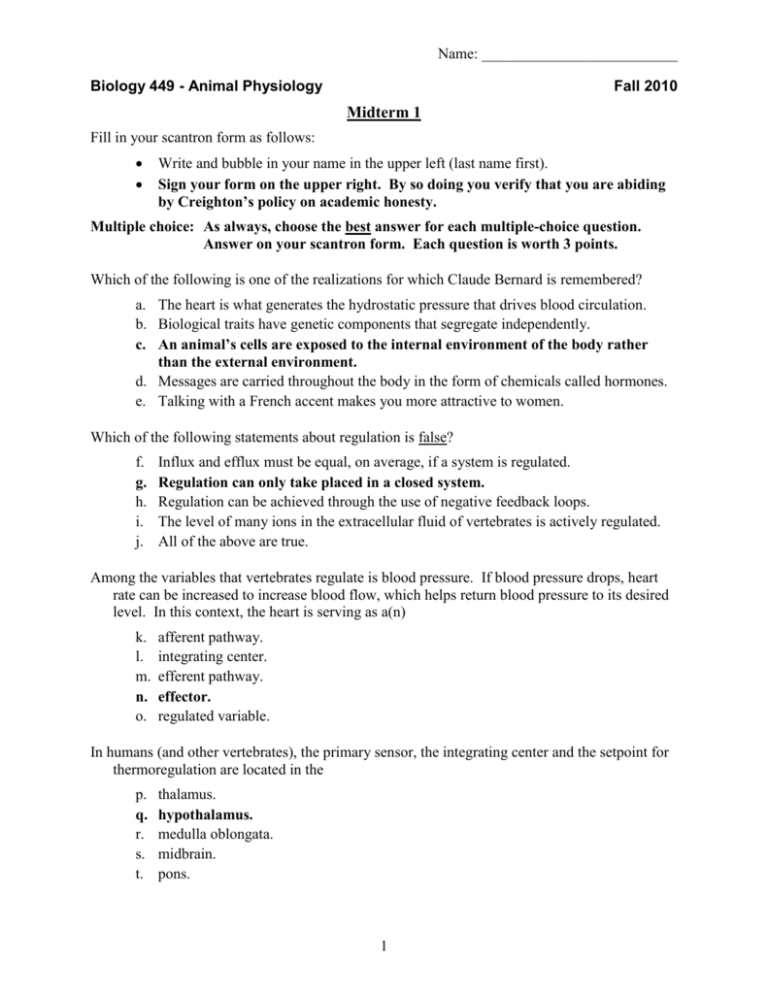
Name: __________________________ Biology 449 - Animal Physiology Fall 2010 Midterm 1 Fill in your scantron form as follows: Write and bubble in your name in the upper left (last name first). Sign your form on the upper right. By so doing you verify that you are abiding by Creighton’s policy on academic honesty. Multiple choice: As always, choose the best answer for each multiple-choice question. Answer on your scantron form. Each question is worth 3 points. Which of the following is one of the realizations for which Claude Bernard is remembered? a. The heart is what generates the hydrostatic pressure that drives blood circulation. b. Biological traits have genetic components that segregate independently. c. An animal’s cells are exposed to the internal environment of the body rather than the external environment. d. Messages are carried throughout the body in the form of chemicals called hormones. e. Talking with a French accent makes you more attractive to women. Which of the following statements about regulation is false? f. g. h. i. j. Influx and efflux must be equal, on average, if a system is regulated. Regulation can only take placed in a closed system. Regulation can be achieved through the use of negative feedback loops. The level of many ions in the extracellular fluid of vertebrates is actively regulated. All of the above are true. Among the variables that vertebrates regulate is blood pressure. If blood pressure drops, heart rate can be increased to increase blood flow, which helps return blood pressure to its desired level. In this context, the heart is serving as a(n) k. l. m. n. o. afferent pathway. integrating center. efferent pathway. effector. regulated variable. In humans (and other vertebrates), the primary sensor, the integrating center and the setpoint for thermoregulation are located in the p. q. r. s. t. thalamus. hypothalamus. medulla oblongata. midbrain. pons. 1 While sick with the flu, an individual whose body temperature is normally 37°C instead has a temperature of 39°C for two days. This change in temperature most likely reflects u. v. w. x. y. a change in the setpoint for regulation. a failure of the integrating center. too much activity by effectors that increase body heat. a failure of effectors that decrease body heat. c and d Given the definition of a positive feedback loop, an initial decrease in the variable being controlled would lead to z. effectors decreasing the variable further. aa. effectors increasing the variable. bb. no further change in the variable. cc. a change in the setpoint. dd. complete mayhem. The portion of the nervous system that lies entirely within the gastrointestinal tract is the ee. afferent nervous system. ff. enteric nervous system. gg. parasympathetic nervous system. hh. somatic nervous system. ii. sympathetic nervous system. The reason the normal membrane potential of cells is about -70mV is that, when at rest, jj. there is a higher concentration of K+ outside the cell than inside. kk. there is a higher concentration of Na+ inside the cell than outside. ll. the membrane is more permeable to Na+ than K+. mm. the membrane is more permeable to K+ than Na+. nn. the membrane is equally permeable to both K+ and Na+. During the relative refractory period after an action potential, which of the following is true? oo. New action potentials have a much longer duration than normal. pp. New action potentials show an initial hyperpolarization instead of a depolarization. qq. The threshold potential for a new action potential is higher than normal. rr. The direction of action potential propagation temporarily reverses. ss. The initiation of a new action potential is not possible. The speed with which action potential propagate along an axon is determined largely by tt. the concentration of K+ inside the axon. uu. the magnitude of the graded potential that initiates the action potentials. vv. the duration of the hyperpolarization phase of the action potential. ww. the distance along the axon that the depolarization from each [AP] spreads. xx. whether the path of the axon is straight or winding. 2 In a myelinated axon, action potentials yy. occur everywhere along the axon. zz. do no occur at all. aaa. occur only at the start and the end of the axon. bbb. occur only in the myelinated portions of the axon. ccc. occur only at the nodes of Ranvier. Following the release of neurotransmitter at a neural synapse, which of the following mechanisms helps to eliminate neurotransmitter from the synaptic cleft? ddd. Diffusion of neurotransmitter out of the synaptic cleft eee. Enzymatic breakdown of the neurotransmitter fff. Reuptake of the neurotransmitter by adjacent cells ggg. Two of the above hhh. All of the above Which of the following has the potential to have the greatest excitatory effects on a postsynaptic neuron? iii. An ionotropic receptor acting as a Na+ channel that opens when activated jjj. An ionotropic receptor acting as a Na+ channel that closes when activated kkk. An ionotropic receptor acting as a K+ channel that opens when activated lll. A metabotropic receptor that triggers the opening of Na+ channels when activated mmm. A metabotropic receptor that triggers the opening of K+ channels when activated A postsynaptic neuron receives input from two presynaptic neurons, A and B. A has excitatory effects, and B has inhibitory effects. A single excitatory postsynaptic potential triggered by A is not sufficient to trigger an action potential in the postsynaptic neuron. Which of the following could not be true? nnn. The postsynaptic neuron could be depolarized by the effects of presynaptic neurons. ooo. The postsynaptic neuron could be hyperpolarized by the effects of presynaptic neurons. ppp. The postsynaptic neuron could be brought to threshold by spatial summation alone. qqq. The postsynaptic neuron could be brought to threshold by temporal summation alone. rrr. The postsynaptic neuron could be affected by both temporal and spatial summation. A phasic receptor is a sensory cell that sss. shows rapid adaptation to a continuous level of stimulation. ttt. does not show adaptation to continuous level of stimulation. uuu. shows a large dynamic range. vvv. shows a small dynamic range. www. shows range fractionation. 3 Taste receptors for salt are activated by xxx. yyy. zzz. aaaa. bbbb. the activation of G-protein-coupled receptors by NaCl. the activation of G-protein-coupled receptors by Na+. the activation of G-protein-coupled receptors by Cl-. the entry of Na+ ions through channel proteins. the entry of Cl- ions through channel proteins. Which of the following would result in the weakest response by the otolith orgrans (also known as maculae)? cccc. dddd. eeee. ffff. gggg. Going from a standstill to a fast run. Going from a fast run to a standstill. Tilting the head forward, as though to look down at the ground. Turning the head from left to right, as though indicating “no”. Jumping off a cliff. Which of the following gives the correct sequence of structures through which light passes as it enters the human eye? hhhh. Cornea, fovea, lens iiii. Cornea, lens, fovea jjjj. Lens, cornea, fovea kkkk. Lens, fovea, cornea llll. Fovea, cornea, lens Which of these steps in the transduction of light by a rod cell is incorrect? mmmm. Photons transform cis-retinal into trans-retinal. nnnn. The opsin activates transducin. oooo. The transducin deactivates PDE (phosphodiesterase). pppp. cGMP levels decrease, resulting in the closure of Na+ channels. qqqq. The rod’s membrane hyperpolarizes. Consider a rod cell that synapses with a single bipolar cell. This bipolar cell would be classified as “light-on” if it rrrr. released more neurotransmitter when the rod was struck by more light. ssss. released more neurotransmitter when the rod was struck by less light. tttt. was itself a photoreceptor. uuuu. glowed in the dark. vvvv. If I never hear about bipolar cells again, it’ll be too soon. 4 Short answer: Write a concise answer to each of the following questions. Your answers should fit in the spaces provided. Diagrams are welcome but must be accompanied by written explanations. Each question is worth 8 points. 2. The following questions relate to the passive movement of substances across membranes. a. Provide the Fick equation (you do not need to define the variables) b. Consider the following scenario. A, B, C, and D are all solutions of a non-ionic solute X. A membrane permeable to X but not to water separates A from B, and C from D. The concentration of A and C is 1M, and B and D is 0.5M. If the membrane separating A from B has twice the surface area and half the thickness as that separating C from D, but is otherwise identical, how will the initial rate of diffusion compare in the two systems? Show your work for full credit. A B C D c. Consider the same starting conditions for A and B as given above, except in this case the membrane is also permeable to water. Explain what will happen with regard to the movement of both X and the water in the system. 5 3. The following questions relate to transport of water and solutes. a. Give an example of secondary active transport across a cell/plasma membrane. b. Explain how active transport can be used to move water across a cell layer against the overall osmotic gradient. 4. Describe the relative timing of the opening and closing of the voltage-gated channels in an axon as they occur during an action potential. How does each event influence the membrane potential of the axon? 6 5. Describe the process of lateral inhibition as seen in, for example, cutaneous mechanoreceptors. What advantage does this mechanism provide? 6. Describe the transduction of sound as it occurs in the cochlea. You do not need to dicuss events that occur outside the cochlea. 7
